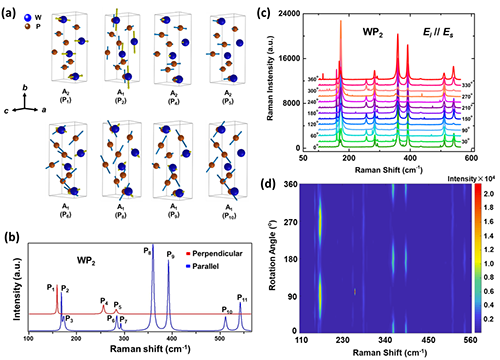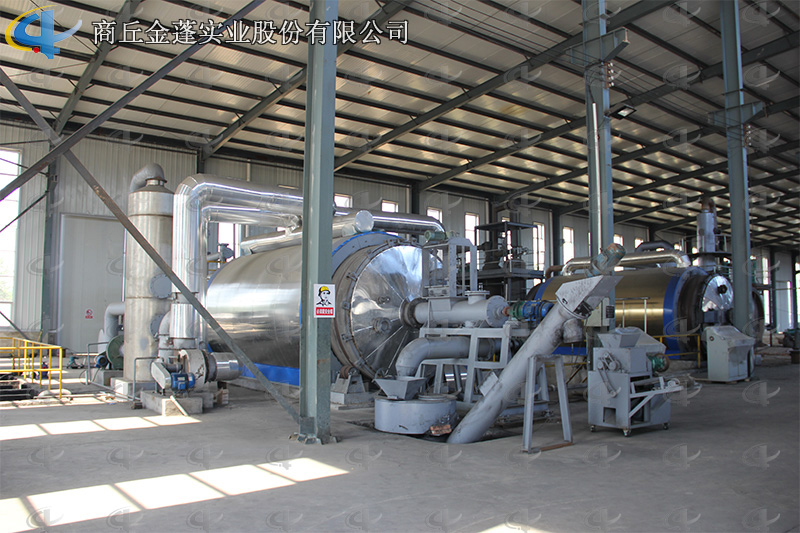[ Instrument Network Instrument R & D ] Exploring the second type of Weir semi-metallic materials and studying the singular physical properties of them is one of the areas that have received extensive attention in the research of topological quantum physics. The theory predicts that tungsten diphosphide WP2 is the second type of Weir semimetal. Because the large difference in charge density distribution between the phosphorus atom and the transition metal tungsten atom in WP2 makes the crystal structure symmetry difficult to determine directly by X-ray diffraction, it is a prerequisite for the appearance of the second type of Weil semimetallic state in WP2. One of the conditions for the inversion of the space inversion symmetry needs to be further confirmed by experiments. In addition, the anisotropy of the ac in-plane resistivity of WP2 crystals with temperature has not been experimentally studied, and it is unclear whether the anisotropy of the ac in-plane resistivity of crystals can be controlled by magnetic fields.

Topological quantum computing is a novel and interdisciplinary discipline developed in the past decade. It involves quantum computing, topology, topological quantum field theory, and condensed matter physics with topological order. Topological quantum computing uses topological quantum states in a multibody system to store and manipulate quantum information. It has inherent fault tolerance, which brings hope to the physical realization of quantum computing, and also promotes our exploration of the topological quantum behavior of matter.
Institute of Physics, Chinese Academy of Sciences / Beijing National Research Center of Condensed Matter Physics, Key Laboratory of Extreme Condition Physics, EX1 Group Special Researcher, Zhi Zhiguo, PhD student Su Bo, Lian Pei master student Hou Yanhui, and collaborators carried out the WP2 space inversion Study on the anisotropy of ac in-plane resistivity. They measured the energy of the Raman active phonon in WP2 and the angle between the a-axis of the crystal and the direction of the incident optical electric field using the linearly polarized Raman spectroscopy to calculate the spatial inversion of the first-principles calculation. The results of the symmetry-broken crystal structure (space group Cmc21) are consistent. The agreement between the Raman spectroscopy experiments and the theoretical calculation results shows that the spatial inversion symmetry of the WP2 crystal structure is broken, which supports the existence of a Weir semimetal state in WP2.
Raman spectra are a type of scattering spectrum. Raman spectroscopy is based on the Raman scattering effect found by Indian scientist CV Raman, and analyzes the scattering spectrum with a frequency different from the incident light to obtain information on molecular vibration and rotation, and is used in molecular structure research An analytical method.
In general, the characteristics of the crystal structure are closely related to its electronic properties, so they further studied the anisotropy of the ac in-plane resistivity of WP2 at different temperatures and different magnetic fields. Low-temperature electrical transport measurement results show that when the temperature is between 100 K-200 K, the in-plane resistivity anisotropy of WP2 shows a weak temperature dependence, and the electrical resistivity Rc / of the current along its crystal c-axis and a-axis, respectively. The ratio of Ra is about 1.6; but when the temperature is lower than 100 K, the in-plane resistivity anisotropy increases sharply, and at a temperature of 10 K, Rc / Ra ≈ 8.0. Further electrical transport measurements show that applying a magnetic field perpendicular to its ac plane to WP2 can regulate the anisotropy of its in-plane resistivity. When the magnetic field reaches 9 T, its in-plane resistivity ratio Rc / Ra can increase Up to about 10.6. Therefore, WP2 exhibits the largest in-plane resistivity anisotropy in known second Weir semimetals (such as MoTe2 and TaIrTe4) with a carrier concentration of 1021 cm-3. To investigate the reason why the in-plane resistivity anisotropy of WP2 increased sharply at low temperatures, they measured its linearly polarized infrared reflection spectrum at low temperatures.
Infrared spectroscopy has a wide range of applicability to samples. Solid, liquid or gaseous samples can be applied. Inorganic, organic, and polymer compounds can be detected. In addition, infrared spectroscopy also has the characteristics of rapid testing, convenient operation, good repeatability, high sensitivity, small amount of sample, and simple instrument structure. Therefore, it has become a common and indispensable tool for modern structural chemistry and analytical chemistry. Infrared spectroscopy is also widely used in the study of polymer configuration, conformation, and mechanical properties, as well as in the fields of physics, astronomy, meteorology, remote sensing, biology, and medicine.
Infrared spectrum measurement results show that as the temperature decreases, the carrier concentration and effective mass of WP2 both show a weak temperature dependence, but the anisotropy of the in-plane scatter rate abruptly increases below 100 K, and The in-plane resistivity anisotropy changes with temperature. The resistivity R of a metal is generally determined by its carrier concentration n, its effective mass m * and its scattering rate τ: R = m * / (e2nτ), so the low-temperature linear polarization spectrum results of WP2 indicate its in-plane resistance The abrupt increase of the rate anisotropy at low temperature results from the sudden enhancement of the anisotropy of the in-plane scattering rate. The above research work has laid the foundation for the development of new electronic components using the resistivity anisotropy of the second type of Weir semimetal in the future.
The second type of Weir semimetal is a generalization of the Weir semimetal concept, which is characterized in that the Dirac cone near the Weir point is inclined, so the corresponding electronic dispersion relationship does not satisfy the Lorentz transformation symmetry near the Weir point. Theoretical predictions of the second type of Weir semimetals have two experimental characteristics: (1) tilted electron dispersion relationship near the Weir point; (2) anisotropic negative magnetic resistance, that is, only one direction on the ab-plane There is negative magnetoresistance due to the ABJ-effect. WTe2 is the second type of Weir semi-metal material predicted by the first theory.
Source: Institute of Physics, Encyclopedia
Domestic Waste Disposal Equipment
Background:
End Products Usage:
1. Fuel oil used as fuel for industries such as steel&iron factories,ceramic or chemical industries or hotels restaurants etc.
2. Carbon black be used as garden fertilizer
3. Sync Gas be recycled to heat machine


Advantages:
1. Integrated design of reactor and base, no civil work needed to make the installation faster and easier.
2.Sync gas purification system is designed for developed countries which has very high environmental standard. It makes the full operation process under slightly negative pressure to ensure the safety of operation. And the system removes acid content of the sync gas to ensure the production is both clean and environmental friendly.
3.National Patent Unique Smoke Scrubbers: More efficient removal of the acid gas
and dust of the smoke through neutralization, purification and absorption, environmental friendly without pollution.
4.National Patent automatic Carbon Black Discharging System: Speedy fully
enclosed Auto-discharging under high temperature, avoiding carbon black pollution and saving time.
5.Safety aspect:Production under Slightly negative pressure, automatic
submerged welding technology, ultrasonic nondestructive testing, both manual and
automatic safety devices.
Parameters:
|
NO.
|
ITEM
|
Technical Parameter
|
|
1
|
Door Model
|
Full Open Door
|
|
2
|
Suitable Raw Materials
|
Medical waste
|
|
3
|
Structure
|
Horizontal Type Revolves
|
|
4
|
Main Reactor Size
|
Φ2200*6000mm
Φ2600*6600mm
|
|
5
|
Daily capacity
|
5~6MT
8-10MT
|
|
6
|
Work Pressure
|
Normal Pressure
|
|
7
|
Reactor Rotation Speed
|
0.4R/M
|
|
8
|
Power
|
18-25 kw
|
|
9
|
Cooling Method
|
Cycle Water
|
|
10
|
Type of Drive
|
External Annular Gear
|
|
11
|
Heating Method
|
Direct Heating
|
|
12
|
Type of Installation
|
With Foundation
|
|
13
|
Noise dB(A)
|
≤85
|
|
14
|
Operating Mode
|
Intermittent Operation
|
|
15
|
Total Weight(MT)
|
25~40Mt
|
|
16
|
Installation Space Required
|
30m*10m
|
|
17
|
Manpower
|
3~4/batch
|
|
18
|
Shipment
|
Ф2200×6000=1*40HC+1*40FR
Ф2600×6600=2*40HC+1*40FR
|
Domestic Waste Disposal Equipment
Garbage Recycling Plant,Waste Recycling Machine,Food Waste Recycling Machine
Shangqiu Jinpeng Industrial Co., Ltd. , https://www.recyclings.nl


